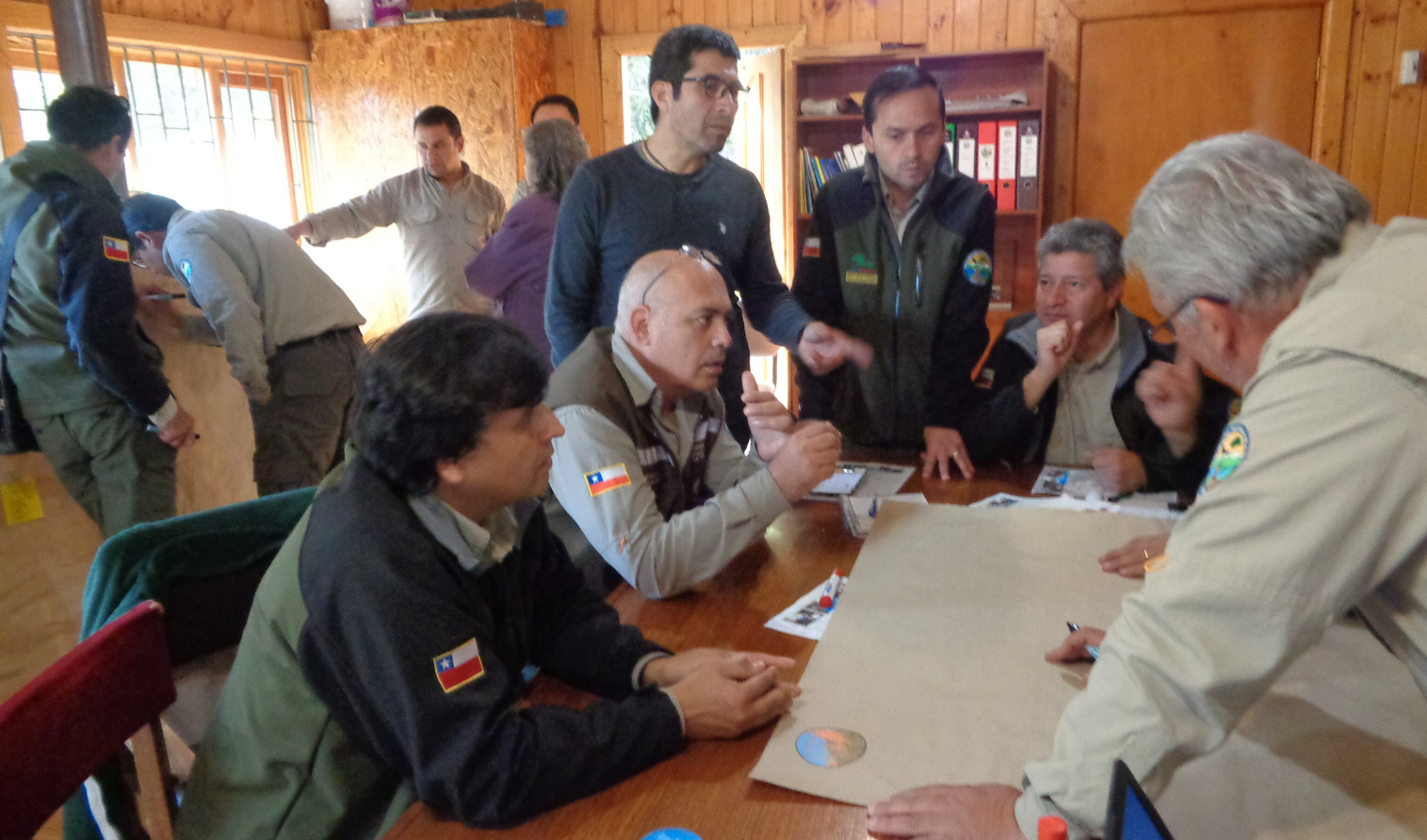
Photo Credit: CONAF
Conservation in Practice with Corporación Nacional Forestal
Using the Conservation Standards to help the Chilean wine palm
Third place in the 2020 Case Study Competition
by CONAF
The Chilean palm (Jubaea chilensis) is an endemic species to Chile and is the southernmost palm tree in the world, making it a species of great scientific and ecological value. Based on current data, it is believed that within the last 500 years, this species has lost nearly 98% of its population due to heavy exploitation, largely for its sap used to make palm honey known as “miel de palma,” (a practice that was not regulated until 1941). Chilean wine palms used to number in the millions but are now estimated to be fewer than 130,000.
La Campana National Park is home to the largest surviving population of Chilean wine palms (about 60,000 individuals). Identifying this population as a conservation priority for the park in 2016, the Chilean National Forest Corporation (CONAF) decided to use all steps of the Conservation Standards in their work to help rescue and save the trees.
To help protect the trees, CONAF worked with the communities living in close proximity to Chilean wine palms to help establish the first official ban on extracting palm seeds. Additionally, CONAF changed the species classification from vulnerable to endangered and began the process of having the tree species listed on the Convention on International Trade in Endangered Species of Wild Fauna and Flora (CITES) as well as creating a livestock registry in the park the tree is mainly found within.
Learn more about how CONAF took the steps of the Conservation Standards to address conservation challenges of the Chilean wine palm by exploring the document on the left or download their submission form here.
Download CS
The Conservation Standards is the product of inputs, field tests, and discussions among members of the Conservation Measures Partnership (CMP), which has final editorial authority over the Conservation Standards. Substantial input was also provided by members of the Conservation Coaches Network (CCNet) and other CMP partners.
Photo Credit: Felix Cybulla
Support CS
The biodiversity conservation community is tackling large, complex, and urgent environmental problems where the stakes are high. However, we don’t have a fully functional system to assess the effectiveness of our actions. Without more rigorous measurement of effectiveness and disciplined recording of our efforts, we cannot know or demonstrate that we are achieving desired results.
Photo Credit: Felix Cybulla
Our Collaborators
Every organization, agency, project, and individual has its own preferred set of terms. There is no right answer – the most important thing is that the members of your project team and the people with whom you work have a clear and common understanding of whatever terms you choose to use.
Photo Credit: Chris Scarffe
Contact Us
To inquire about supporting Conservation Standards (CS) or for general inquiries, please contact us at CMPinfo@ConservationMeasures.org
Photo Credit: Nature Conservancy of Canada
